Monica Enache, researcher and active curator for a few years now within the Modern Romanian Art Department, put forward at the end of 2016 an ample exhibition presenting artworks made between 1948-1965. The narrative of the curatorial project follows the route of award winning art works at official exhibitions, looking to deconstruct the methods of communist propaganda and to critically recover what socialist realism meant in Romania. Being the first ample exhibition of its kind, I discussed with Monica about the premise of this research which she is conducting as part of her Ph.D. at the National University of Art. Since we work together in the same department at MNAR, even though I am not explicitly interested in researching this project, certain aspects that Monica presented made me curious. Is socialist realism still a sensitive subject and is communism still a trauma? Does recycling the socialist realism discourse in contemporary art exhaust or diminish the impact of art propaganda? How do we recover the history of totalitarian art? How critical are we with history? What do we own up to?
I’ve seen the exhibition Art for the people? 2-3 times now and I intend to see it again. How did you end up conceiving an art show about socialist realism, what makes you spend the time and energy over these archives?
I’ve always been interested in the art/politics intersection and just how much art’s plunge into the political sphere means a release, a perversion by lowering the aesthetic level or a gain if we look at it as activism (when this is the case!). Then, the subject (the Romanian version) fascinates me, first of all because it is not understood, it is no deciphered (so there is a mystery) and probably a bit of extra attraction because I’ve lived 10 years in communism, too short to make up my mind and study this but enough so that I remained with obsessive unforgettable memories. I think this is the origin of my interest; after all, I want to have a better image on a piece of recent Romanian history that I was also a part of, even if for a short while. I feel compelled to do this. I am part of a frontier generation; my upbringing took place during two directly opposing regimes. Even if adapting is easier when you’re 10, the 1989 fracture was a moment I vividly remember to this day. There’s probably some kind of need to revisit the memory of my communist childhood in order to answer some questions I had back then: Why are people in line if nothing is for sale? Why is the power cut off? Why are people sad? Why do they tell jokes stealthily?
There is another reason: I find it strange that Romania is one of the last remaining country to study its communist art and I think that, beyond any considerations that I am not interested in, this is a bizarre thing or the behavior of an unhealthy society that does not realize the dangers of erasing memory.
Whenever I conduct a research I begin with a perspective on the world and values in which I believe in and I strive for an affirmative approach on history, positive aspects that could serve as models or roots for current practices. I cannot help but take a stance and it feels fair to the viewer to completely own up to my personal filter. What curatorial model do you follow? What does curatorial objectivity say?
I think a curator, as the origin of the word imposes, must put forward ideas, must discuss sensitive subjects or taboos, must open a dialog or a dispute, must bring to life subjects that other people don’t care for but have a gain in the present. To do this, I don’t think it’s necessary for history to bend to these ideas, it would be incorrect and this is why we have fiction, after all. There can be, of course, various ways to interpret history, but the facts remain the same and must be taken fully, not selectively.
As far as I’m concerned, I started this research with a clear mind; I had some directing ideas but I abandoned them over time. It was somehow easier in this case because there was no thorough research on the subject, which is why I had to start with primary sources, which I found mostly untouched as well. This helped me form my own theory on the phenomenon that may or may not correspond with other ideas on the subject. Once more, it is an open theme because there is no comprehensible research in the artistic field and the few that are cover the period of Nicolae Ceaușescu. So we’re generally talking about preconceived ideas (on both sides) that are not sustained by an in extenso consultation of the specific archives.
You talk about “researching history” but for me the very concept of big history, a singularity, is not valid anymore. National, official history has been generally written via omissions (women, homosexuals, Roma people, etc.) The experiences of minority groups that were never recorded in the great national histories actually change the perspective of a reality or a “unique historic truth”. This is why I think that, depending on the position you look at history, narratives change. Art for the people? is an art show that follows the official narrative of the state (from the archives).
This is true, no doubt. However I am not trying to restore the official communist history, I am interested in highlighting the idyllic universe of ideological images (official artistic production) and the heavy reality of a totalitarian regime (based on recent history studies but also on the archives that offer very interesting data on the relationships between artists, power relationships, earnings, prizes, rewards, access to the lucrative commissions of monumental art etc.). I am interested in revealing the mechanism of this construct. I think it’s time to practice a detached look on a sector of Romanian art history without eluding the generating political context of the entire phenomenon. It’s time to go beyond partisan Manichean approaches/theses that are often referred to, such as the one on uninvolved compromise (any step in the area of engaged art, feigned or otherwise, has consequences at an individual level – the artist – but also, and especially, on “modelling” the mentality of the viewer; so we cannot handle the matter in simplistic terms like give to Caesar what belongs to Caesar, we cannot exclude the artist’s answer, right?) or the one of aesthetic analysis of the art works taken out of context or, the contrary, demonizing in corpore the artists and their works. This does not exclude in any way the ulterior nuances, it’s just a matter of the method of studying.
In an interview, Paul Ricoeur talked about healed, reconciled memory that is necessary for writing history. Have Romanians reached this point? If forgiveness defines individual relationships, the process of reconciling with the totalitarian experience can take place, as Ricoeur finds, over many generations.
But the healing of memory that Ricoeur talks about is the end of a curative process for a collective psyche. We are far from there. It can take for however many generations, provided that this process be already started, whereas I don’t think that a lot of effort is put into this right now; it is rather encouraged to access easier paths that are convenient for a lot of people from many points of view. In fact, words like forgiveness, balance, tolerance, dialog remain the empty currency in the Romanian society. Naturally, the seduction of payback with no gain, the old ways are much more handy. But this way we will never built anything and the necessary healing, like in any pathology, can’t take place on its own. It seems like we are stuck in the irreconcilable bubble of deny-amnesty-conviction.
The first room is heavy and suffocating. The surrounding big canvases, the menacing statues in the middle: is this what a communist propaganda art show looks like? It seems scary, rather inviting you to leave and move on with your life.
First of all, during those years there were only propaganda exhibitions, other types of art were not yet allowed in the public space and yes, they were pretty heavy, the production was huge. I admit I was pushed by my desire to create a certain heavy atmosphere, the claustrophobia and tension felt by those who witnessed a totalitarian regime. It’s natural that your reaction is to reject, but then again don’t we all react the same way when faced with a taboo subject that forces us to go past our own limits? I think a curatorial project has to be transgressive, to excite and arouse controversy; it means that the subject is alive and the issue was well formulated.
I see the curator as a mediator that takes the visitor on a trip into another world, projected in the art show. A kind of facilitator that educates and leads by making art more relevant or accessible via the contexts it creates. I don’t know if one can still produce transgression in the consumerist society, our retinas are already worn-out form the powerful visual content we receive non-stop on all possible communication channels.
I’d say that transgression first of all refers to a content of ideas that a visual is invested with. After all, any visual (no matter its era) is a vehicle for ideas, but let’s not forget that any art work or body of work, if they are alive, permanently remain permeable to present ideas. I suggest a plunge into the art of the Gheorghiu-Dej era, yet “forcing” the visitor to read this visual under the spectre of “the dark years” while keeping into focus the privileges that some enjoyed when they voluntarily embraced this path. It can be a tough experience but, I think, a necessary one; we cannot hope for healing when we can’t even look at the wound.
Your PhD research I imagine led you to various conclusions. How does Groys’ theory work when applied to the Romanian case? What happens with the interwar avant-garde?
My theory is that slowly, after 1956, everything is recuperated, moreover the first postmodern formulas come to life, yet all of them taken as their form, not their content. It’s like simulating openness or yielding by the regime to the artists, offering the illusion of freedom. After all, I think it was an extremely able and not at all random measure because the situation eased and the Dej regime gained what it actually wanted: Art for the people (meaning brainwashing with an invasion of ideological visual) and, after a while, the assertion of the nationalist direction Dej put forward in many of his speeches, most notably the one in 1964. In other words, this stylistic freedom in the art world in the late 50s shouldn’t be seen as the artists’ victory over the system (like I’ve heard so many times!), that is out of the question; everything was under the full control and guidance of the party, censorship hadn’t been removed. In fact, what Dej understood was that if he wanted to assert nationalist-communism, he needed a new type of propaganda art; nothing complicated. So he allowed socialist realism to be infused with the most diverse aesthetic formulas (post-impressionism, modernism, postmodernism etc.), highlighted by the production of those years which is characterized by a diversity of styles.
I don’t think Groys’ theory, which states that there is a continuity from avant-garde to socialist realism and so on, is available in the Romanian case. Romanian avant-garde was an important yet marginal phenomenon, just like the PCdR. Moreover, too few avant-garde artists were involved in the communist project of remodeling Romanian society post 1947.
It’s true that the avant-garde was a marginal phenomenon with few participants, but its relevance today places it in the heart of art history research. This is why I think that the experience of artists like Maxy or Perahim, that adopted the socialist realism method as a discursive anti-fascist weapon as early as the imminence of WW2, are important in placing social realism in the course of art history. You view this as a direct, forced and sudden rupture. I think this hypothesis is available for some artists, for those oriented towards a leftist mindset.
I agree. Yet, before the change of regimes, leftist Romanian artists were a minority (this is a particularity) and I’m afraid that things haven’t changed much even later on. What I wanted to point out was the fact that, as opposed to the Soviet Union, the interwar and postwar Romanian artistic landscape was (and stayed that way till the end of the communist era) poorly populated by engaged leftist artist. Most of them made the change in 1948 due to the reasons we all imagine, even though they had a completely different past (and, more often than not, different political beliefs!). Whenever it became possible, they quickly abandoned the socialist realism aesthetic (Al. Ciucurencu, Boris Caragea, Titina Călugăru, Spiru Chintilă, Ion Irimescu, Mac Constantinescu etc.). Besides, how many of the artists that activated back then admitted and owned up to their works? Didn’t they vehemently denied them? (Moreover, this is one of the reasons why these types of art shows did not take place, as they normally should have, right after the fall of the communist regime.)
What about “Captian don’t be sad, the Guard moves forward through the Communist Party”? Did you find cases of artists that switched from legionary or Antonescu propaganda to communist propaganda?
There were accusations and consequences related to previous extreme right affiliations for some artists. In fact, the legionary past will permanently remain one of the primary accusations used by the regime in order to get what it wanted. Right since 1944, The Syndicate of Fine Arts, paving the way for founding UAP, initiated a purge committee. It was made up of: Cornel Medrea, Nicolae Dărăscu, Lucian Grigorescu, George Talaz, M.H. Maxy. This organization set out to find the possible connections/collaborations/benefits of artists from the previous regime or the legionary movement. The purge was based on a questionnaire that artists were forced to answer and their individual files. One of those purged was Oscar Han who, for a while, was removed from the education system and eliminated from the art scene; for a long time he was just a simple plaster worker. He was rehabilitated in the 60s when the lesson was learned and passions did not run so high anymore. Mac Constantiescu, for example, was let off easy, he was simply removed from the party!
You said in the introductory text that this exhibition can be relevant to the present political context. In what way?
It has something to do with memory and the way we relate to it. I think that a community without memory or with an incomplete, approximate, false memory cannot progress, it is doomed to repeat the same mistakes.
Do you think it is time MNAR put forward a new formula for a permanent exhibition that should include this period as well?
Leaving this matter aside, MNAR should rethink the permanent exhibit of the Romanian Modern Art Gallery anyway. And yes, naturally this sector of art history needs to be included. More so, I am often asked this question ever since the exhibition Art for the people?, which makes me think it’s time…
Since painting has been reinvented in the 2000s, a lot of ideas and images have been recycled from the communist imaginarium. The representatives of the realist lifestyle refer to that era in a relaxed and often detached manner. Other artists make anti-capitalist propaganda by reusing the socialist realism language, but from an obviously marginal position in the local art scene and have an assumed precarious lifestyle (anti-system). What do you think of appropriating socialist realism in this fashion?
What you are actually supports my theory that there is a lack of knowledge about this segment of recent history, which makes appropriation take place at a strictly formal, misunderstood, shallow level that takes the shape of catering to the needs of a western art market that is always on the look-out for novelty and sensational.
This thing with being “anti-system” could be ridiculous if it weren’t alarming. I can understand that someone is anti-system, yet what do you purpose instead? Or is this just salon rebelliousness? It should be known that socialist realism is the repression of the Stalinist regime and its dimension is far more complex that just a simple realist representation. So if we were to take things out of context, they stop having the same meaning, and if we fancy a certain visual that we find to be “cool” today, we should consider the whole package.
Art for the people? The official Romanian aesthetic of 1948-1965 was at the Romanian National Museum of Art between December 9th – April 2nd 2017.
POSTED BY
Valentina Iancu
Valentina Iancu (b. 1985) is a writer with studies in art history and image theory. Her practice is hybrid, research-based, divided between editorial, educational, curatorial or management activities ...
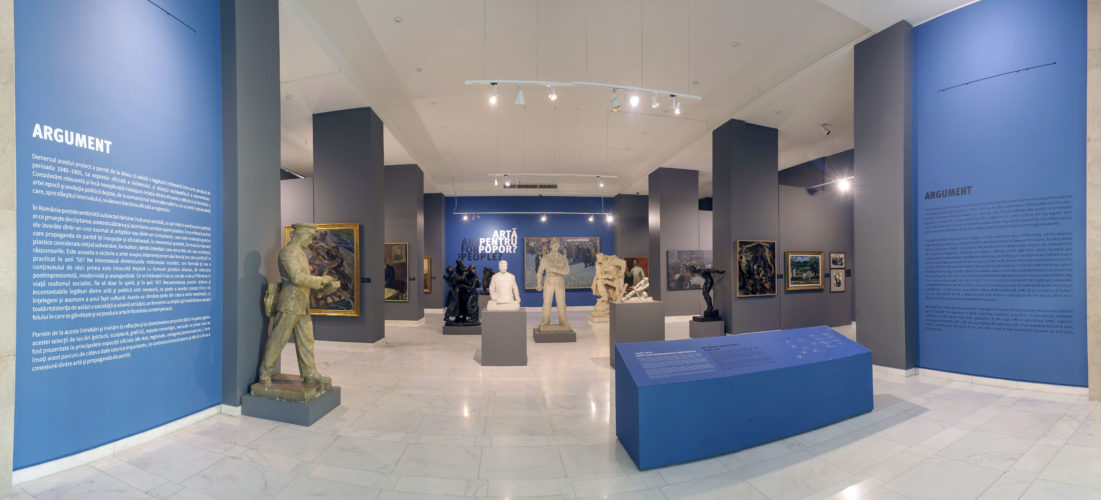
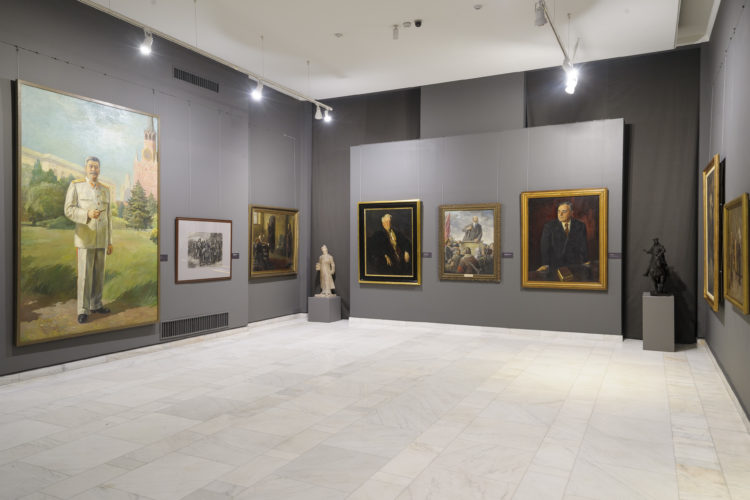
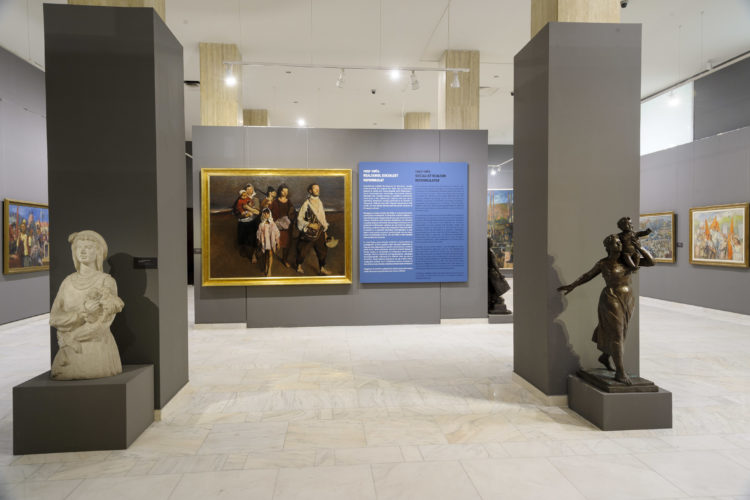
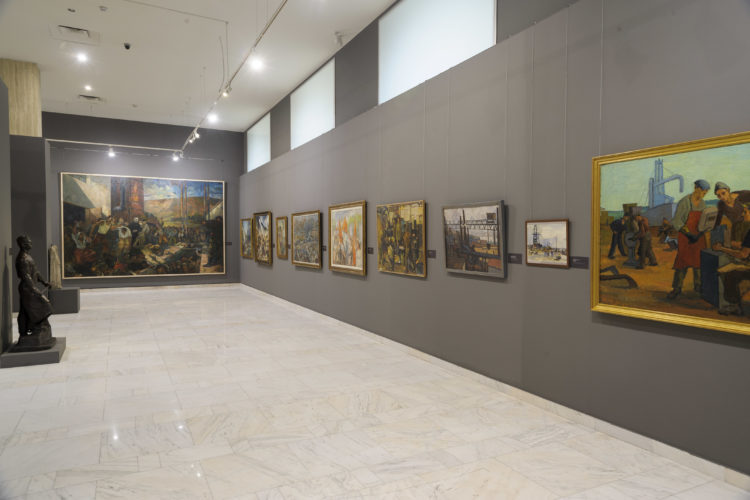
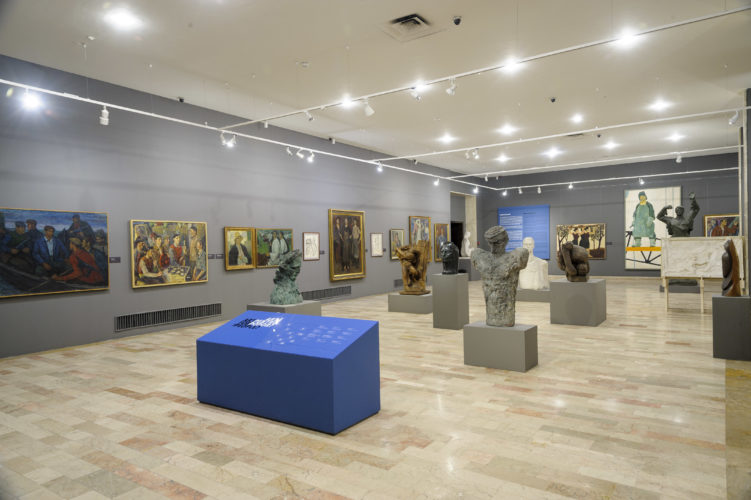
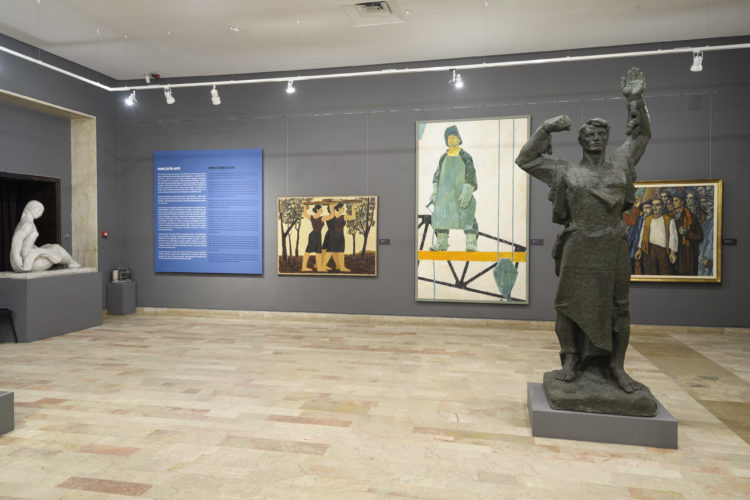
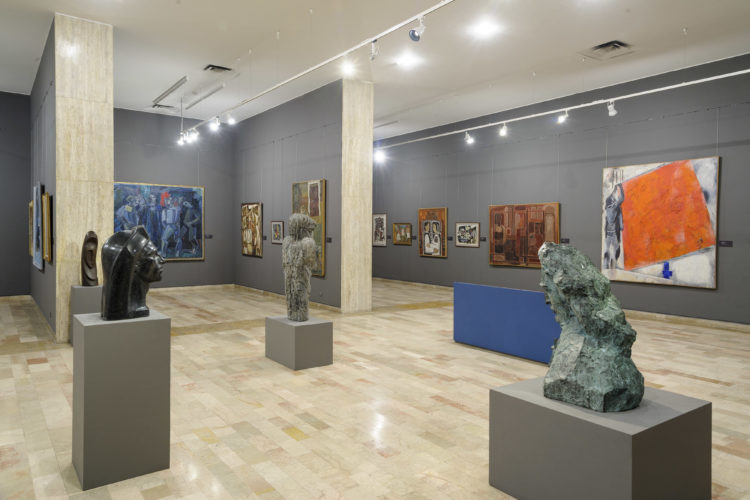
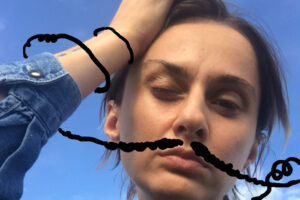
Comments are closed here.